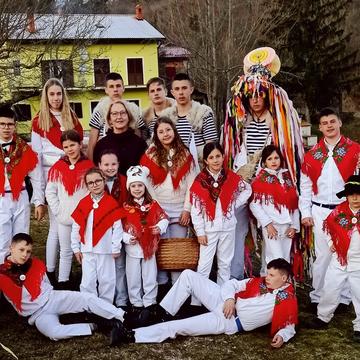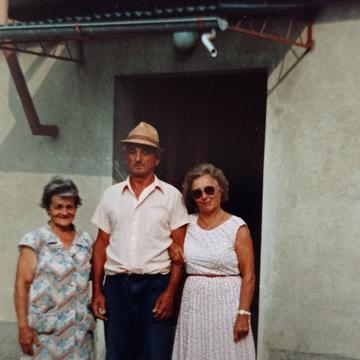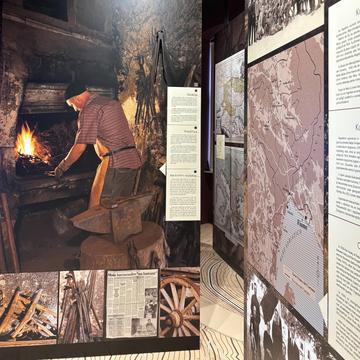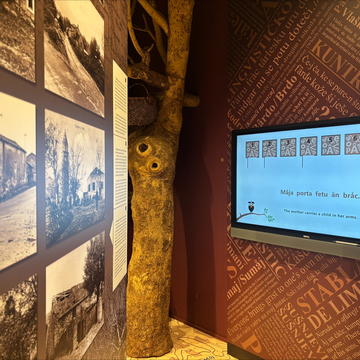hISTROX fieldtrip to Istria—April 2025
From 11 April to 18 April 2025, the hISTROX team made a field trip to the Istrian peninsula, to renew and reinforce the links we had established with speakers of Žejanski and Vlaški during our previous visit in 2019 and during the exhibition we organized at the Muzeum Lapidarium in Novigrad in 2022. Our main aim, through free or semi-directed conversation and by linguistic questionnaires, was to find out more about the recent developments in the life of the community and about its language. In addition to visiting Žejane (for the northern variety of Istro-Romanian) and Šušnjevica, Oprič, Rijeka, Kastav, Matulji, Opatija, and Labin (for the southern varieties), a visit was also made to Trieste (Italy) to meet members of the diasporic Istro-Romanian community there. Uță Bărbulescu focused on Trieste and then Žejane, while Costea, Brădeanu, and Helmrich concentrated on the southern dialect area.
In Trieste, Uță Bărbulescu interviewed members of Istro-Romanian cultural associations (Ervino Curtis and Elena Curtis, Asociația culturală

Žejane. Adrijana Gabriš and young Zvončari in front of her house (La Magåte)
italo-română „Decebal”, Fulvio de Gregorio), as well as a descendant of Istro-Romanians from Šušnjevica (Bruno Bellulovich). The interviews told us a lot about what happened to the community between the two world wars, about the ‘Istrian exodus’ in which the Istro-Romanians were caught up after the Second World War, about the situation of the Istro-Romanians in Trieste, the gradual nature of migration, and the diasporic community in the USA, but also about ‘first language attrition’ and the urgent need to study its effects on this community.

Žejane. Anton Marmilić (Magåta) and his wife Marija in front of their house (La Magåte), with a guest
In Žejane, six active fluent speakers were interviewed mainly in the home of the Gabriš family. These were (with their maiden names and family nicknames): Adrijana Gabriš (Stambulić, lu Magåta/le Grzele), Vesna Slosar (Sanković, lu Kljomina), Irena Majkić (Doričić, lu Jerko), Mauro/Edi Doričić (lu Ovčarić), Željko Doričić (lu Kljone), Mauro Doričić (lu Pavka). They very generously let us make seven hours of recordings containing valuable new information about grammatical structures of the noun and verb and about such things as the history of their once close-knit community, about attempts to revitalize the language in the younger generation, and about local traditions (Zvončari and Pustu). The Zvončari are bell-ringers (see UNESCO Intangible Cultural Heritage) and Pustu is the annual carnival celebration.
Particularly touching was the tale of Mrs Adrijana Gabriš, who had returned to live in Žejane in the house of her grandfather Anton Marmilić Magåta and who has been involved in the revival of the language. Her grandfather was in fact interviewed in the 1960s by Tony Hurren, whose materials, donated to Oxford University, formed the basis of our pilot project!

Šušnjevica. Ecomuseum Vlaški Puti (Vlach Paths). Blacksmith’s workshop and contraband map.

Šušnjevica. Ecomuseum Vlaški Puti. Language learning game on whiteboard.
In Šušnjevica, we re-visited the Ekomuzej Vlaški puti museum, which tells the story of the Vlaški speakers from Susnjevica and area. We also met again, after several years, some of the speakers of Žejanski and Vlaški with whom we’ve been in touch since 2019, when we first visited the region as part of our pilot-project. In addition to these, we were delighted to be able to meet in person a number of speakers of the language who have contributed in recent years to our community-sourcing site on the Zooniverse platform (by the way, this online platform is still welcoming contributions from those who speak or understand Vlaški or Žejanski!).
We spoke with Josip Glavina (a relative of Andrei Glavina), with members of the Stroligo family, with Nereja Obradović, with Dolores Positelj, Ana Petrovčić, Marina Mikuluš, Sonja Vidalić, Sonja Simone, Vilma (Marmilić) Afrić, and Kristina (Karlović) Županić. They all showed the same deep affection and enthusiasm for their languages and the history of their community, and they not only gave us extremely valuable information about Šušnjevica, Kostrčan, Nova Vas/Nosolo, and Žejane, but also about the many and diverse experiences of those who had left the community and relatives who had emigrated to the USA.
Alongside speakers who had lived in the region their whole lives, we were also pleased to be able to talk to Mr Silvio Cvečić, a member of the community who had returned to his native village upon retirement, after having been part of the ‘Istro-Romanian’ diaspora in New York for several decades. One of our interviewees, Ms Nereja Obradović (who had been interviewed by Tony Hurren in the 1960s), kindly allowed us to scan several issues (from the period 1997-1999) of the “Scrisore către fraț Rumer” (‘Letter to [our] Romanian brothers’), a community newsletter in Istro-Romanian published for the members of the community, by Emil Petru Rațiu in collaboration with Ervino Curtis and the Andrei Glavina Cultural Association – see the illustrations.
We recorded eleven interviews and free conversations which we are currently busy transcribing and annotating.
We have already started to prepare our next trip. As we are always interested to meet other members of the community, please get in touch at istrox@ling-phil.ox.ac.uk, if you wish to talk to us in September.
We are deeply grateful to all the members of the community who took the time to talk to us and made us feel us so welcome in Istria during our April trip.
We thank everyone who took time to talk to us, for the generosity with which they offered us so much information about their language and their community. Their enthusiasm inspires us to continue our work and explore new avenues of research.
We also wish to thank Dr Chiara Cappellaro, of Oxford University’s Faculty of Linguistics, Philology, and Phonetics, for her invaluable support in making contact with members of the Istro-Romanian community in Trieste. We are also deeply grateful for all the help and guidance shown to us by Mrs Viviana Brkarić (for the southern community) and Dr Robert Doričić (for Žejane).



